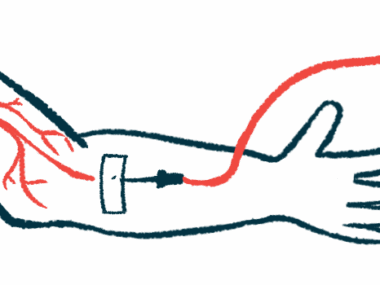Rituximab treatment more effective than cyclophosphamide for GPA
About 90% vs. 68% of patients achieved disease remission, study finds
Written by |

Treatment with rituximab is superior to cyclophosphamide at inducing disease remission in people with granulomatosis with polyangiitis (GPA), according to a single-center study in Iran.
While the safety profiles of the two therapies were comparable, treatment with rituximab was more effective, the study found. Specifically, about 90% of rituximab-treated patients achieved disease remission within six months, compared with 68% of those on cyclophosphamide.
“By highlighting the superiority of [rituximab] in inducing remission, we can potentially improve patients’ outcomes and guide treatment decisions,” the researchers wrote.
The study, “The comparison of Rituximab and Cyclophosphamide for induction therapy in patients with granulomatosis with polyangiitis,” was published as a letter to the editor in the International Journal of Rheumatic Diseases.
Both rituximab and cyclophosphamide used in AAV treatment
GPA is a type of ANCA-associated vasculitis (AAV), a group of autoimmune diseases marked by inflammation and damage to small blood vessels that are most commonly associated with self-reactive antibodies called ANCAs. This common type is usually characterized by symptoms affecting the respiratory tract and the kidneys.
AAV treatments now available aim to induce disease remission, where no symptoms are apparent for a time, and to maintain remission. These immunosuppressive medications mainly consist of glucocorticoids combined with either cyclophosphamide or rituximab.
Cyclophosphamide (sold as Cytoxan and others, with generics available) has historically been used for AAV off-label. Meanwhile, rituximab (sold as Rituxan in the U.S. and Japan, with available biosimilars) was granted approval more than a decade ago in the U.S. for treating GPA and microscopic polyangiitis (MPA), the two most common types of AAV. It’s available both as an induction therapy and as a maintenance treatment.
Previous trial data showed comparable treatment responses between rituximab- and cyclophosphamide-treated patients. However, in the real world, the data comparing both therapies in GPA patients are limited.
Now, researchers at the Tehran University of Medical Science retrospectively analyzed rituximab’s safety and efficacy as an induction treatment against cyclophosphamide among GPA patients followed at their center between 2016 and 2020.
During that period, 155 adults were diagnosed with GPA and had complete medical records. A total of 29 rituximab-treated patients and 28 cyclophosphamide-treated patients matching for age, sex, disease severity, organ involvement, and type of ANCAs at the study’s start were included in the final analysis.
The main efficacy goal was to assess rates of disease remission after six months of induction treatment. Disease remission was defined as a score of zero on the Birmingham Vasculitis Activity Score for Wegener granulomatosis (BVAS/WG), and a dose of prednisolone, a glucocorticoid, up to 10 mg.
The results showed that the proportion of patients who achieved disease remission was higher in the rituximab group than in the cyclophosphamide group (89.7% vs. 67.9%).
Overall, our study suggests that [rituximab] demonstrates greater efficacy than [cyclophosphamide] for induction remission treatment in GPA patients while maintaining a comparable safety profile. … Therefore, [rituximab] is a preferred option for induction therapy in GPA patients.
The presence of ANCAs against proteinase 3 (PR3), a common target of these self-reactive antibodies — detected in 58.6% of rituximab-treated patients and 46.4% of those on cyclophosphamide — was associated with lower treatment efficacy.
Specifically, among those positive for anti-PR3 ANCAs, about 76.5% of those on rituximab and 53.8% of those on cyclophosphamide achieved disease remission.
The most commonly reported complication during the six-month follow-up in both treatment groups was infection, at similar rates in both patient groups.
“Overall, our study suggests that [rituximab] demonstrates greater efficacy than [cyclophosphamide] for induction remission treatment in GPA patients while maintaining a comparable safety profile,” the researchers wrote. “Therefore, [rituximab] is a preferred option for induction therapy in GPA patients.”
Still, the team noted that the “results should be treated with caution” due to the study’s retrospective nature and small number of included patients.






